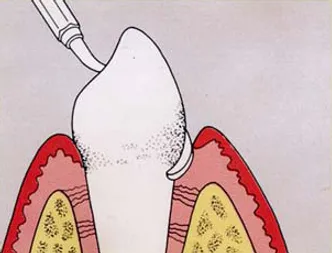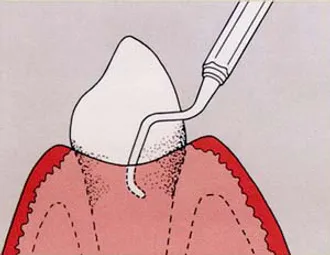Gum Disease Care
Gum disease constitutes for over 80% of the dental disorders. If one does not take proper care at the initial stages, gum disease can pose a major dental threat which can be devastating to the overall health of an individual. It is crucial to treat gum disease at early stages so that the outcome of the disease can be minimized to a great extent.
Gum disease is a very serious dental problem and can be dangerous since the advancement of the disease my go unnoticed, undetected and can be painless at the initial stage. Factors related to gum disease could be family genetics, smoking and consumption of tobacco related products, diabetes, excess stress, poor nutrition, and pregnancy.
Progression of Gum Disease
Periodontal disease is a gradual infection of the gums and the supporting bone. It is caused when the buildup of plaque on and around the teeth calcifies into tartar. This tartar is covered with plaque that contains micro-organisms which release toxins causing the first stage of gum disease known as Gingivitis. Gingivitis is characterized by swelling, inflammation and bleeding of the gums. In the advance stage of gum disease, Periodontitis, the toxins cause the bone to resorb or dissolve. The teeth having lost a part of their bone support begin to move and eventually can result in tooth loss.
Treatment for Gum Disease
Although it is always better to prevent gum disease, if gum disease has already been incurred, it is suggested to get immediate treatment as early as one can. Our office adopts, implements, and practices the best treatments for gum diseases using state of the art technology, devices, and equipment. Dr. Hovious is specialized in treating gum disease and helping people keep their teeth and you can trust that she and her staff will strive to accomplish your dental goals.
Scaling and Root Planing
One type of treatment for gum disease is a deep cleaning or a process called scaling and root planing. Scaling assists in eliminating the bacterial plaque and tartar which have formed on the surface of the teeth below the gum line. Root planing is where the root surface is smoothed so the supportive tissues can better reattach to the tooth surface. In some cases, laser therapy can be used in conjunction with scaling and root planing to remove the excess plaque and tartar. And this can result in less bleeding and swelling compared to the conventional deep cleaning process.

Subgingival Scaling

Root Planing
Surgery
Surgery involves the reflection of tissue to allow the Periodontist to remove the diseased tissue, tartar, and plaque from the tooth’s surface below the gum line. The root of the tooth is planed and smoothed in order to allow gum tissue to heal properly. The Periodontist may also advise bone grafts depending on the amount of bone that is lost due to gum disease. Treatments to alleviate the effects of gum disease include additional home and follow up care.
Laser Assisted Therapy
Laser assisted treatment can be used solely or in conjunction with surgical and non-surgical procedures to treat gum and bone disease. This treatment offers many benefits to patients undergoing care. Patients are amazed about how fast, easy and painless the procedure is. Most of the time no stitches are required, very little bleeding occurs and this speeds up the recovery time.
Local Antimicrobial Agents
In some cases antimicrobial agents can be used during scaling and root planing (Deep Cleaning Procedures) to help arrest the progression of periodontal disease. This provides a reduction in the bacterial count and infection in the pocket and can assist in gum healing.